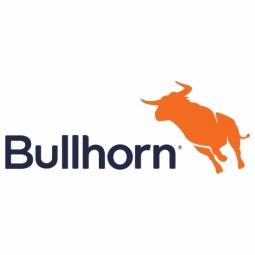Technology Category
- Infrastructure as a Service (IaaS) - Cloud Databases
Applicable Industries
- Equipment & Machinery
- Telecommunications
Applicable Functions
- Human Resources
- Procurement
Use Cases
- Supply Chain Visibility
- Time Sensitive Networking
Services
- System Integration
- Training
About The Customer
Founded in November of 2012, Optomi is one of the fastest-growing staffing firms in the U.S., having gone from a $0 to $12 million run rate in just one year. The company positions the best IT talent and helps its clients define the technology of tomorrow. Optomi was founded by Todd Black and Michael Winwood, who ran the staffing firm Technisource, which was acquired by SFN Group in 2007. SFN was soon after acquired by Randstad (a Bullhorn customer) in early 2012. Optomi is a Mac-based company and uses all cloud-based software.
The Challenge
Optomi, a rapidly growing IT staffing company, was facing challenges with its Applicant Tracking System (ATS) and Customer Relationship Management (CRM) tool, Bullhorn. Being a Mac-based company, Optomi struggled with Bullhorn's compatibility issues as it was only compatible with Internet Explorer and Windows. To use Bullhorn, Optomi had to purchase and install VMware and Windows to run Internet Explorer and access the ATS. This process was not only cumbersome but also led to support issues as Bullhorn support representatives were working on PCs while Optomi recruiters were on Macs. Another challenge was the speed of the system. Optomi recruiters found that downloading usable documents was too slow and difficult, which led them to avoid using resume attachments in the original version of Bullhorn.
The Solution
To overcome these challenges, Optomi became one of the first customers to standardize on the most powerful version of the Bullhorn ATS/CRM ever built — the cross-browser, Mac-enabled S Release. Optomi entered the S Release beta program and found the new version to be highly efficient, intuitive, and significantly faster compared to accessing the system via VMware. The company started with 4 people using S Release in beta and the results were so dramatic that within weeks, 99% of the agency’s producers started using S Release. Optomi now puts all new hires directly onto S Release. The company is also looking forward to using Outlook completely within Bullhorn, instead of separately for history and tracking, as they’re doing now. Once Optomi switches to Bullhorn for Email, they estimate they’ll save an additional 10-15 minutes per recruiter per day.
Operational Impact
Quantitative Benefit

Case Study missing?
Start adding your own!
Register with your work email and create a new case study profile for your business.
Related Case Studies.

Case Study
Smart Water Filtration Systems
Before working with Ayla Networks, Ozner was already using cloud connectivity to identify and solve water-filtration system malfunctions as well as to monitor filter cartridges for replacements.But, in June 2015, Ozner executives talked with Ayla about how the company might further improve its water systems with IoT technology. They liked what they heard from Ayla, but the executives needed to be sure that Ayla’s Agile IoT Platform provided the security and reliability Ozner required.

Case Study
IoT enabled Fleet Management with MindSphere
In view of growing competition, Gämmerler had a strong need to remain competitive via process optimization, reliability and gentle handling of printed products, even at highest press speeds. In addition, a digitalization initiative also included developing a key differentiation via data-driven services offers.

Case Study
Predictive Maintenance for Industrial Chillers
For global leaders in the industrial chiller manufacturing, reliability of the entire production process is of the utmost importance. Chillers are refrigeration systems that produce ice water to provide cooling for a process or industrial application. One of those leaders sought a way to respond to asset performance issues, even before they occur. The intelligence to guarantee maximum reliability of cooling devices is embedded (pre-alarming). A pre-alarming phase means that the cooling device still works, but symptoms may appear, telling manufacturers that a failure is likely to occur in the near future. Chillers who are not internet connected at that moment, provide little insight in this pre-alarming phase.

Case Study
Premium Appliance Producer Innovates with Internet of Everything
Sub-Zero faced the largest product launch in the company’s history:It wanted to launch 60 new products as scheduled while simultaneously opening a new “greenfield” production facility, yet still adhering to stringent quality requirements and manage issues from new supply-chain partners. A the same time, it wanted to increase staff productivity time and collaboration while reducing travel and costs.

Case Study
Integration of PLC with IoT for Bosch Rexroth
The application arises from the need to monitor and anticipate the problems of one or more machines managed by a PLC. These problems, often resulting from the accumulation over time of small discrepancies, require, when they occur, ex post technical operations maintenance.

Case Study
Data Gathering Solution for Joy Global
Joy Global's existing business processes required customers to work through an unstable legacy system to collect mass volumes of data. With inadequate processes and tools, field level analytics were not sufficient to properly inform business decisions.







